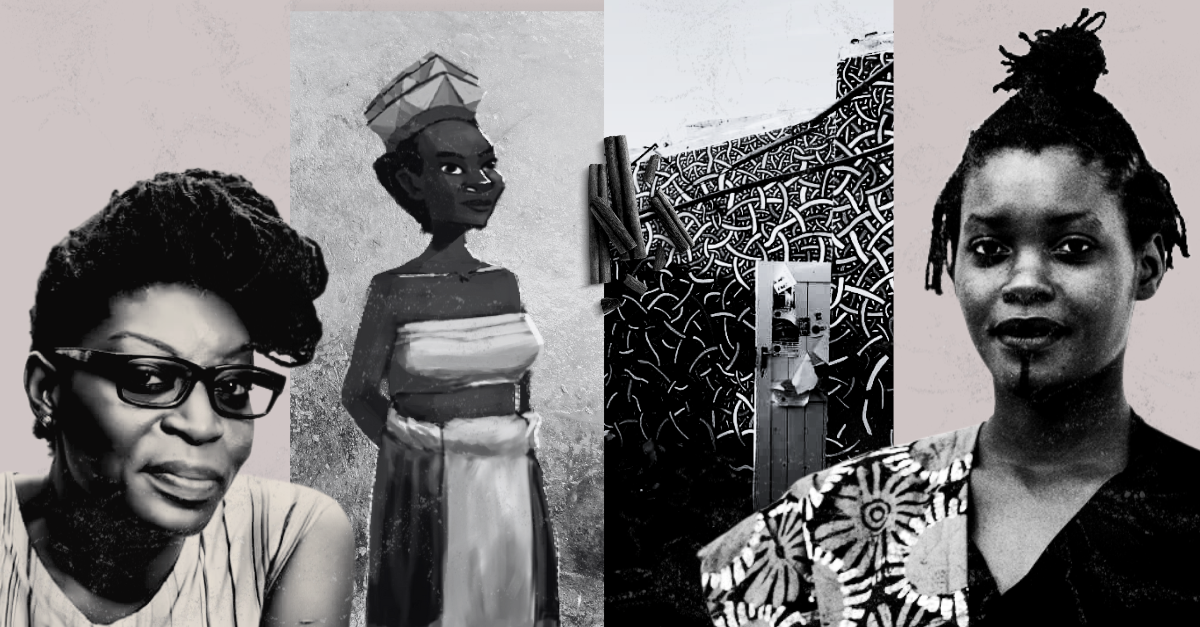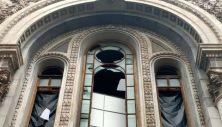Industrial legacy creates international links and leverages cultural tourism. New Taipei City’s Pingxi District was once a prosperous mining...
Vous n'êtes pas connecté
- English
- Français
- عربي
- Español
- Deutsch
- Português
- русский язык
- Català
- Italiano
- Nederlands, Vlaams
- Norsk
- فارسی
- বাংলা
- اردو
- Azərbaycan dili
- Bahasa Indonesia
- Հայերեն
- Ελληνικά
- Bosanski jezik
- українська мова
- Íslenska
- Türkmen, Түркмен
- Türkçe
- Shqip
- Eesti keel
- magyar
- Қазақ тілі
- Kalaallisut ; kalaallit oqaasii
- Lietuvių kalba
- Latviešu valoda
- македонски јазик
- Монгол
- Bahasa Melayu ; بهاس ملايو
- ဗမာစာ
- Slovenščina
- тоҷикӣ ; toğikī ; تاجیکی
- ไทย
- O'zbek ; Ўзбек ; أۇزبېك
- Tiếng Việt
- ភាសាខ្មែរ
- རྫོང་ཁ
- Soomaaliga ; af Soomaali
Rubriques :
 Maroc - TAIWANTODAY.TW - Taiwan Review - 01/Feb 00:00
Maroc - TAIWANTODAY.TW - Taiwan Review - 01/Feb 00:00
Mining Matters
Mining and other industrial legacy is leveraged for leisure. When still an infant in the early 1960s, Taiwan President Lai Ching-te (賴清德) lost his father in a coal mining accident. Last October his childhood home in New Taipei City’s Wanli District opened to the public as a memorial to mine work with displays of photographs and documents from New Taipei City Retired Mineworkers Exchange Association—founded in 2018 by Chou Chao-nan (周朝南), who started working in the pits at the age of 14 in the 1950s—and the Ministry of Economic Affairs’ (MOEA) Geological Survey and Mining Management Agency (GSMMA). In photos by Chou, a miner lies down to access a coal seam and other miners wear minimal clothing due to extreme heat in the tunnels. (Courtesy of Chou Chao-nan) Guided tours of the former residence are organized by Vasai Environmental Protection Association, a local group named after an Indigenous clan in Wanli. As well as the exhibits, visitors can stroll the neighborhood, which is now a mine history culture park. GSMMA Chief Secretary Hsu Ching-yuan (許慶源) pointed out that preserving mining heritage is a mission they have actively engaged in since 2019 in cooperation with the Ministry of Culture’s Bureau of Cultural Heritage (BOCH). The bureau launched the Cultural Routes of Taiwan (CRT) project in 2021 to revitalize declining national industries including mining, forestry and sugar production. CRT’s mining department acts as a caretaker at former extraction industry sites across northern Taiwan. Current targets include two GSMMA-administered mining culture centers in New Taipei’s Ruifang District. One was set up in 2023 and the other in 2024 under an MOEA strategy to inventory and regenerate mining sites as leisure assets. The latter is situated at the Houtong Miners’ Culture and History Museum that Chou and other retired colleagues established in 2019 near New Taipei’s Houtong Station. Energy Education Hsu noted that GSMMA holds an educational brief. For example, its office in eastern Taiwan’s Hualien County hosts an exhibition area that displays minerals, geodes and local stone. Tours at the facility by appointment include an introduction to mining, minerals and geology, as well as history and environmental education. He also drew attention to the world’s second-oldest oil field in the northern county of Miaoli’s Gongguan Township, where MOEA-overseen energy supplier CPC Corp. manages an exhibition hall explaining the history of Chuhuangkeng’s oil wells. “We’re collaborating with the BOCH and local activists to retrieve memories about the industrial tradition while integrating education and cultural resources into leisure options,” Hsu said. A statue commemorates workers at the world’s second-oldest oil field in the northern county of Miaoli's Gongguan Township. (Photo by Chin Hung-hao) The CRT project takes inspiration from European models like the France-based Council of Europe and UNESCO’s World Heritage Centre to build grassroots networks advancing historical knowledge, cultural diversity, mutual understanding and exchanges bridging boundaries between people, places and organizations in both the public and private sectors. CRT Project Leader Lin Hsiao-wei (林曉薇), who heads the Cultural Property Preservation Center at Chung Yuan Christian University in northern Taiwan’s Taoyuan City, described the initiative as primarily about constructing a cultural identity to communicate with the world in the introduction to the CRT exhibition held at BOCH headquarters, which are housed in a former Japanese colonial era (1895-1945) brewery that is now a cultural heritage park in the central city of Taichung. Lin is a board member of the London-headquartered International Committee for the Conservation of Industrial Heritage and so pointed out that the CRT’s connective nature transcends single-spot models and puts equal emphasis on tangible and intangible legacy. She is also a consultant to New Taipei’s Gold Museum, which opened in 2004 at former gold and copper mining sites in Ruifang’s Jinguashi. The municipal museum administers a renovated Japanese-era cinema in the neighboring settlement of Jiufen, which is appropriate as much of the catalyst for public interest in mining culture, be it gold or coal, stems from iconic films shot in the 1980s and ‘90s in mining locations. Taiwan director Hou Hsiao-hsien (侯孝賢) became internationally famous for movies such as 1986’s “Dust in the Wind” and 1989’s Venice Film Festival Golden Lion winner “A City of Sadness,” both partly set and filmed in Jiufen. Shengping Theater reopened in 2011 as a venue for public use and as a testament to the former prosperity of the gold and copper mining region spanning Jinguashi, Jiufen and Shuinandong. The Geological Survey and Mining Management Agency branch office in eastern Taiwan's Hualien County offers a guided tour of minerals and other items. (Courtesy of Geological Survey and Mining Management Agency) Collected Memories Anecdotes from Chou and other former miners and their families, along with surveys, data collection and field studies, are a major information source for the CRT exhibition. Chou took many photos of his colleagues working in narrow, dark and muggy underground tunnels. “The oppressive environment that miners worked in was mitigated by camaraderie in the form of social gatherings, drinking and meals,” he recalled. In contrast to major coal bed sites in Australia, Indonesia and the U.S. that largely engage in surface extraction, Taiwan’s relatively thin seams required digging hundreds of meters below sea level to access the deposits and underground railways extending hundreds of kilometers in length to transport the coal out. “Miners’ stories are full of darkness, pain and sweat,” Chou said. “This major fuel resource, which was critical to national development, everyday life and the economy and defense, was acquired at a great physical price, paid for in laborers’ health,” he added, likening the industry’s past economic significance to that of the contemporary semiconductor sector. Anecdotes from Chou and other former miners are a major information source for the Cultural Routes of Taiwan exhibition on mining in the central city of Taichung. (Photo by Chen Mei-ling) According to Hsu, Taiwan’s numerous mine sites offer great potential to benefit local community regeneration projects. “Compared with open-pit mining, underground excavation works very differently because it requires extensive networks of supported and ventilated tunnels and shafts,” he said. “Many places still bear traces like derelict machine housing sites, rusting rail tracks and abandoned coal washeries.” A former coal-fired power station used from 1939 to 1983 has also been conserved in the northern port city of Keelung as part of the National Museum of Marine Science and Technology. “The essential job is to integrate heritage structures and facilities with regional resources through public and private sector partnership,” he added, citing international models such as the UNESCO World Heritage mining site in Japan’s Kumamoto prefecture and the Emscher Park in Germany’s Ruhr region. A retired miner guides a tour at Houtong Miners Culture and History Museum in New Taipei’s Ruifang District. (Courtesy of GSMMA) Among other venues, the Houtong museum and nearby sites that previously operated under the 1934-founded Ruisan Mining Co. have merged as one single park area, which is now administered by GSMMA and New Taipei City Government. Archives documenting colonial-era coal production up to the postwar period have been collected and restored in collaboration with Ruisan since last year, Hsu said. New technologies like augmented and virtual reality applications have been harnessed to offer immersive, interactive visitor experiences to help communicate the historical dimension of the driving force powering the country’s economic base up to the 1980s. “Economic growth may render former mining sites vulnerable to property developers,” Hsu added. “We want to protect them and retain the legacy, especially for younger generations to explore so they understand how we got where we are today.” Write to Pat Gao at cjkao@mofa.gov.tw
Articles similaires
Piercing the Darkness
Two visual artists decades apart shed light on the labor that built Taiwan’s wealth. “Interior of Metal Shop,” ink and pigment on paper,...
New Alchemy
Dramatic coastal landscapes studded with relics of an industrial past entice visitors. The celebratory atmosphere at the Gold Museum in Jinguashi, a...
Heritage sites can drive economic growth and job creation
The Spion Kop anniversary underlines the potential of heritage sites to create jobs and foster cultural and economic growth in local communities.
Essential Industry
A picturesque settlement that was once Taiwan’s largest oil town is now wreathed with tung trees and walking trails. Derricks in Chuhuangkeng in...
Snapshots March / April 2025
Marshall Islands warmly receives President Lai President Lai Ching-te (賴清德) began his Pacific allies tour Dec. 3, 2024, with a meeting with...
How Zambian Women Are Rewriting Museum Culture
Zambian women are pioneering a new museum culture that is revolutionizing cultural preservation through a fusion of digital technology and indigenous...
Taipei book fair highlights Taiwan’s rich social fabric
The 2025 Taipei International Book Exhibition opened with fanfare Feb. 4 at the Taipei World Trade Center in the capital, showcasing Taiwan’s...
1,333 cultural monuments damaged in Ukraine due to Russian aggression
In Ukraine, as a result of full-scale Russian aggression, 1,333 cultural heritage sites and 2,185 cultural infrastructure facilities were...
Comment on What would Bishop Marianne Budde say if she was invited to the Mining Indaba? by Anonymous
Father Stan’s article is a powerful and compelling call for compassion in the corporate world, particularly in the context of the coal mining...
Les derniers communiqués
-
Aucun élément








